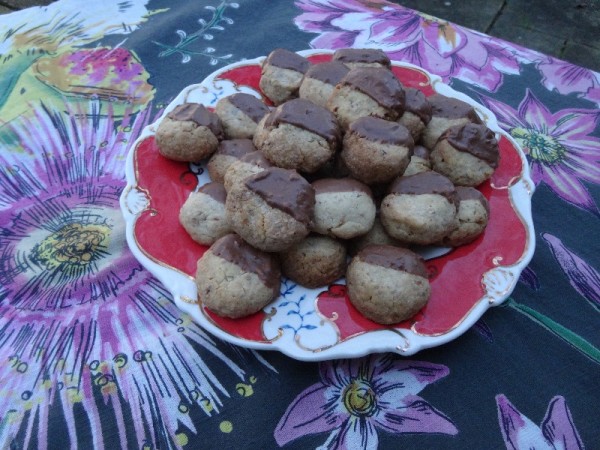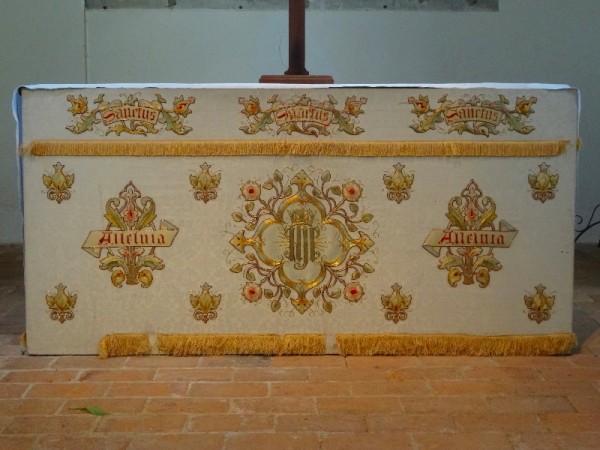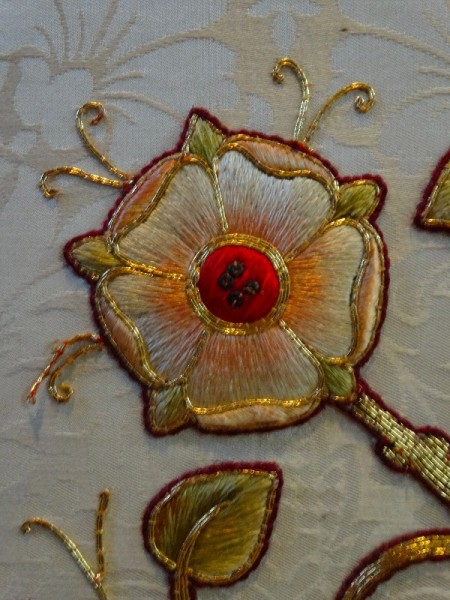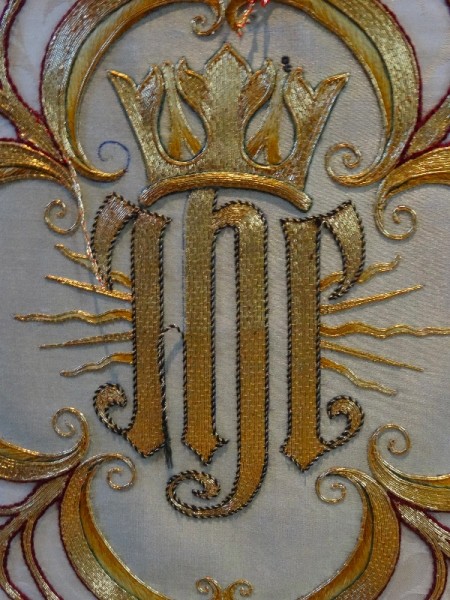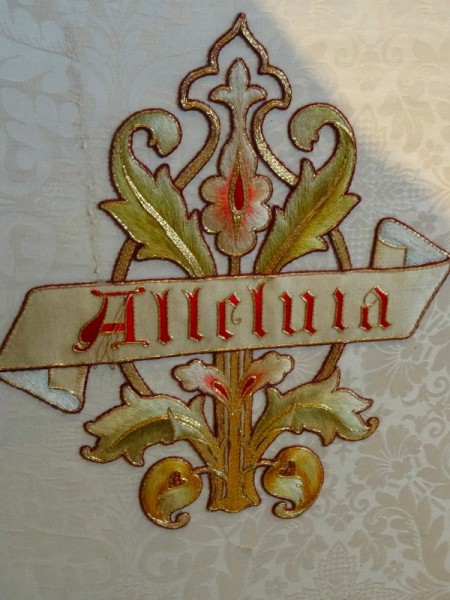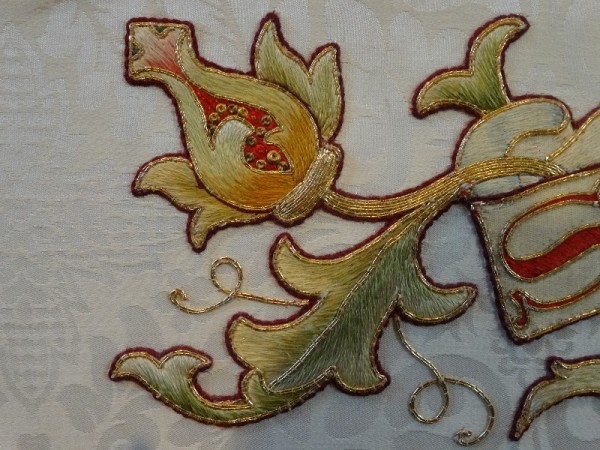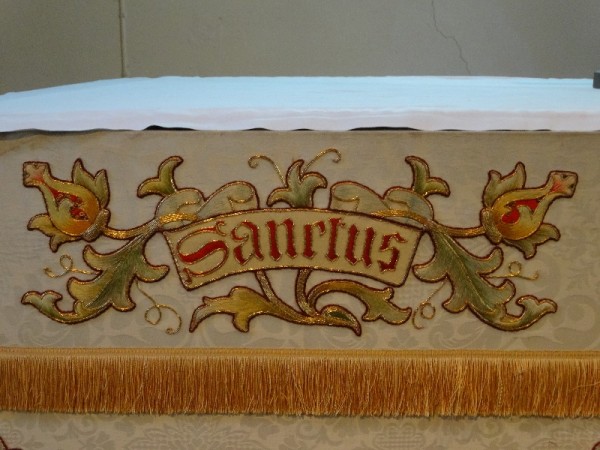It’s taken nearly a month to get back in the swing of making church biscuits what with being in London for one weekend, the vicar being given a Sunday off for the next and last weekend somebody appearing at the vicarage bearing a covetable tin (pale green, hexagonal, Prince of Wales feathers) full of homemade chocolate cookies. So, a bit rusty, yesterday I set about making these Butter Pecan biscuits which I based on a recipe in Tessa Kiros’s Apples for Jam (Murdoch Books, 2006). Church attendance was likely to be on the low side as St Mary’s Players (the church’s very own thespians) would be recovering from their annual pantomime experience, waking with beards crying out to be shaved off, stage make-up induced dermatitis calling out for cold cream and tight-wearers’ rash begging for hydrocortisone cream. Many of us at church were a bit pantomime bruised too with voices scratchy from shouting for Flossie whenever anybody tried to steal her rapidly flowering pot plant and calling somewhat uncomprehendingly for a squirrel called David Cameron to pop out from a hole in a tree. (We will laugh at almost anything.) But I only mention the pantomime late sleepers because this is the one day when my biscuits can fail miserably and there will be fewer to witness such failure.
Ingredients
220 g/ 7 3/4 oz butter
70 g/ 2 1/2 ox icing sugar (+ a bit more for dusting)
1 tsp vanilla extract
100 g / 3 1/2 oz crushed pecans
250g / 9 oz plain flour (I use 100g wholemeal + the rest plain white flour)
100 g/ 3 1/2 oz chocolate (I used a dark milk chocolate bar)
This recipe makes 30-40 biscuits (depending upon size).
Preheat oven to 190 degrees C/ 170 degrees C for a fan oven/Gas Mark 5
Use non stick baking trays which won’t need lining with baking parchment because, hooray, these biscuits are v. short and come away from the tray easily.
Cream butter, sugar and vanilla essence until smooth. Add the flour gradually and then the nuts.
Divide the dough in 4 and from each of these quarters, with fingers dipped in the extra icing sugar, pinch off ten little pieces and roll them into a ball. (I always panic a bit at this point because if you roll the ball too much it starts to break up – but never fear, experience tells me you can press the crumbling nugget back into shape.) Once on the baking tray, flatten the biscuits a little.
Bake for about 15 minutes. Transfer biscuits to a cooling rack (they might be a bit soft and crumbly but they firm up on cooling).
When fully cool, put the broken up chocolate piece in a bowl over a pan of just below boiling water (taking care the bottom of the dish is not touching the water). When chocolate melted, dip biscuits in until half covered. Return to cooling tray.
Pecans gave a subtly different taste from ground almonds, which I love and rarely make biscuits without. As the pecans were bashed rather than ground the texture was also more robust. It might be fun to try ground walnuts another time, although walnuts can be a bit bitter and dry.
But the biscuits were v. good – so good they reminded me of those I had at tea in the Savoy with an American friend before Christmas. I’ve never had tea at the Savoy before but she was staying there, so we went straight from lunch in the National Gallery Restaurant to tea in the Savoy just for the fun of it, and to ensure minimum break in our conversation. And we did only order tea – (well we were still eating lunch under an hour before!) – but with the tea came 4 different little almondy, shortcakey, part chocolatey biscuits of the utmost deliciousness and refinement. Greed overcame us. My biscuits tasted similar, but in appearance were country clodhoppers to the kitten-heeled delicacy of the Savoy’s.

